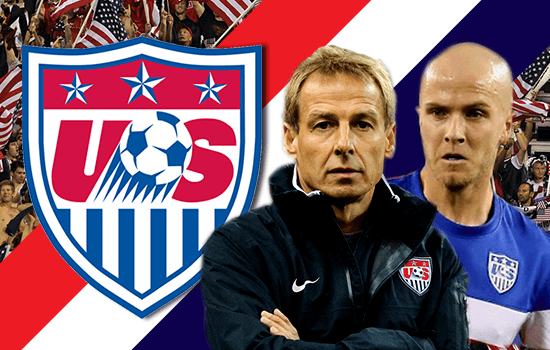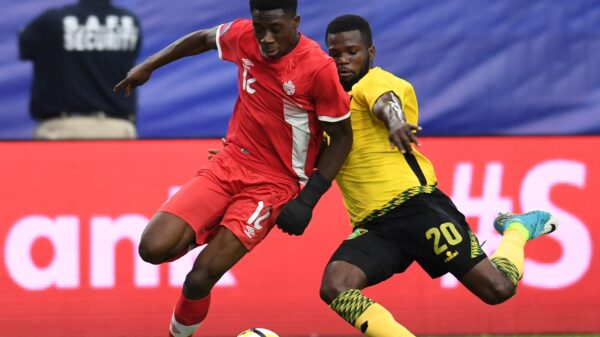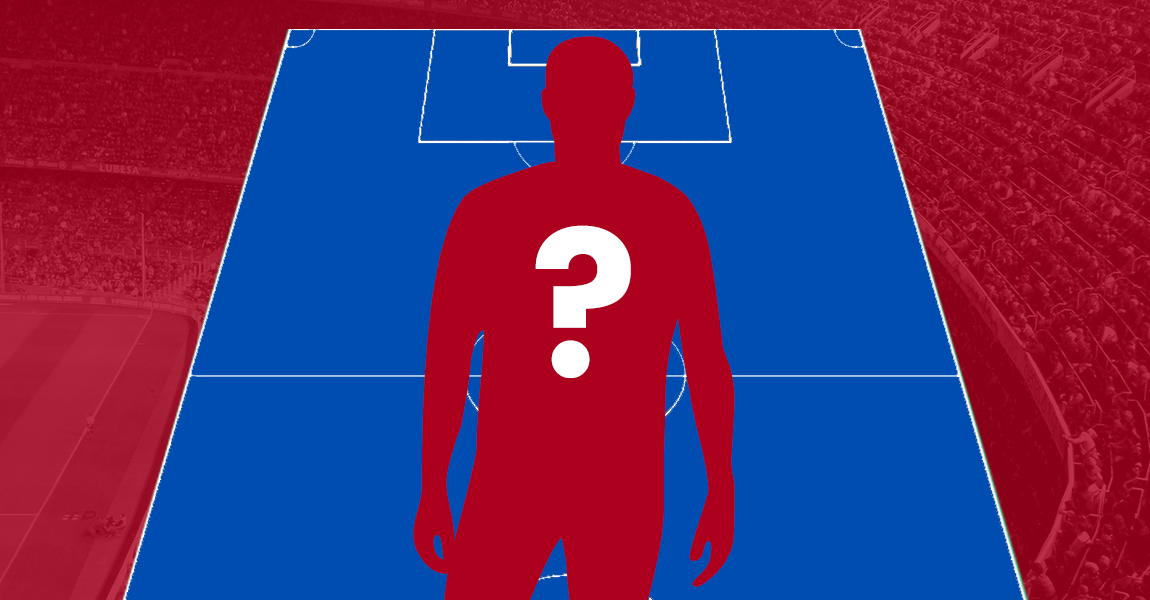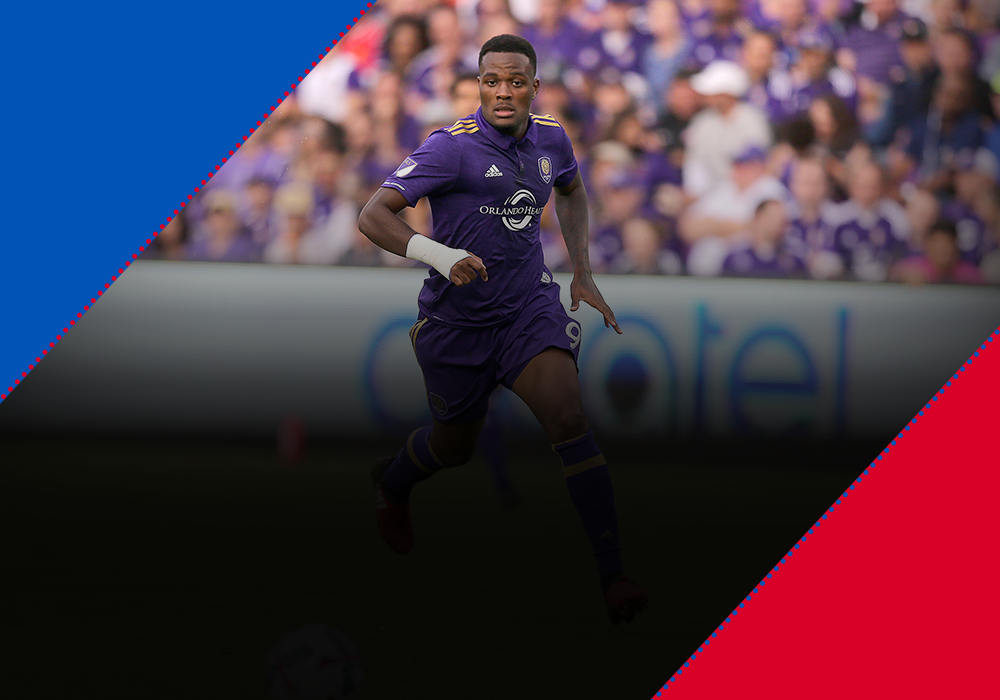The USMNT impressed many with their performances in Brazil. They did well to get out of a tough group and matched Belgium stride for stride in the Round of 16. Phil Baki takes a look at what the USSF and the MLS have to do to “Grow the Game”.
The United States Men’s National Team (USMNT) has returned home from Brazil but the team does so having escaped a very difficult group and pushing Belgium to the very brink in the Round of 16. The buzz that surrounded the team was really unprecedented in the United States. ‘Watch parties’ across the country drew thousands of people, eager to see the Red, White, and Blue succeed at the World’s most prestigious sporting competition. World Cup games drew millions of viewers even beyond the USMNT’s games. People who never gave “soccer” a shot before were now invested in the tournament. So with the 2014 edition of the World Cup being one that was seen as a success for the team and one that captured the imagination of the American public, it is now important to look forward to what this could mean not only for the USMNT but also for football in America in a broader sense.
“He Couldn’t Even Have Dreamt That”
This quote, aptly, came from ESPN commentator Ian Darke after John Anthony Brooks’ stunning late winner against Ghana in the opening game of the Group Stage. Although it turned out that the big German-American defender had dreamt it, the whole tournament had an air of magic about it for the USMNT. Having started the game against Portugal poorly and conceding an early goal, a stunning strike from midfielder Jermaine Jones and a Clint Dempsey goal 8 minutes from time put the USA into the lead against a team led by Cristiano Ronaldo. Despite Ronaldo’s late assist, Portugal’s heavy defeat to Germany and defeat of Ghana on the last day of the Group Stage combined to send the USMNT to the Knockout Rounds.
Next up for the United States was Belgium. While the game was quite remarkable as it went to Extra Time and was a dramatic spectacle in itself, the response in the United States prior to the game was probably more remarkable. Work ground to a halt. Offices across the country saw a combination of people taking long lunches and calling in sick in order to witness the game. The watch parties that had been popular grew even larger with Soldier Field in Chicago playing host to over 25,000 USMNT fans. Football interest in the USA had reached a fever pitch and even people who had been hostile to the sport in the past were being influenced to watch the games. Although the United States lost 2-1, the mood in the USA was largely positive. Many people posted tweets and Facebook statuses that stated their pride in the way the team performed in the tournament and that Americans should take heart in this performance as a good sign for the 2018 World Cup. This is where many football fans in the United States take issue with the American approach to football.
Back Down to Earth
There is no doubt that many of the fans who watched the World Cup in the United States did so strictly because it is the United States represented in the tournament. This was felt acutely just a couple of days after the United States were knocked out as Major League Soccer returned from it’s World Cup break. July 2nd, the Chicago Fire and Toronto FC clashed just 20 minutes from where 28,000 people had turned out to watch the USA-Belgium match. The game drew an announced attendance of 13,153, about 44% of the capacity of Toyota Park, the Fire’s home stadium. This highlights the issue with football in the United States. When I talk to many of the casual fans who watched the World Cup, they all know about the biggest stars and clubs in the world. When I bring up MLS, many of them laugh it off. This is clearly motivated more by hearsay bias than by actual opinions formulated through watching the matches, but the fact of the matter is that MLS is not taken seriously by much of the American public. MLS has had many excuses made for it in the past with the most likely being that the United States is not a “proper footballing nation.” This excuse may still stand but it is far less supported when you have people turning out in the thousands across the country to watch a football match. MLS, outside of a couple of their franchises, has largely been unable to captivate people with the certainty that the USMNT does at the World Cup.
The main issue I see is that MLS tries to be more like the National Football League or National Basketball Association than it tries to mimic successful football leagues across the world. This signals a disconnect between MLS and football fans in America and, quite frankly, an underestimation of football fans’ passion and understanding of the game. So what can be done in the coming years to remedy this?
Grow the Game
One of MLS’ favorite slogans is “Grow the Game” which some could argue MLS has helped do in the United States but others would argue that MLS has stagnated after a large growth in interest over the past few years. The problem is that with MLS scheduled to grow to 24 teams in the coming years, there are still hundreds of markets in the United States where soccer is thriving and MLS will never be able to accommodate all of them. This is where the lower divisions of US Soccer come into play and where the argument for promotion and relegation between the United States’ four tier system becomes most heated. For those who are not familiar with MLS, it operates in a single-entity system. This differs from European football leagues because rather than having separately-owned clubs that are members of a league, MLS is similar to the NFL or NBA in that its teams are all franchises of the central league. This system is displayed most prominently in the transfer market where the individual teams must have all of their transfers approved by the league itself and in many cases transfer fees for sold players are collected by the league and not by the team that is selling. This system presents the main obstacle to promotion and relegation in the United States’ football pyramid.
In order for pro/rel to exist in the United States, the system, which is currently closed, would have to open up. The franchises in MLS would have to become clubs and MLS would have to release it’s current control in the single entity system. This would allow the lower leagues to become members through a pro/rel system. The nice part for US Soccer is that the other leagues already exist. Currently, there are a host of teams that are playing in levels below MLS. The United Soccer Leagues (USL) which includes USL Pro and the USL Premier Development League are already recognized as playing a large part in lower division soccer by MLS with many regarding USL Pro as the USA’s 2nd division behind MLS. Orlando City SC are gaining a promotion of sorts from USL Pro as they will join MLS next season. The irony in all of this is that they would be earning promotion through their play anyway this year if pro/rel existed. The North American Soccer League (NASL) is another strong contender as a 2nd division in the United States. Their teams enjoyed quite a successful season in the US Open Cup (think FA Cup) in which two of their teams advanced to the quarterfinals of that competition, defeating MLS competition along the way. Finally, the National Professional Soccer League (NPSL) is recognized as a clear 4th division in the USA. It is divided into regional leagues much like the 4th division in Germany. Here there are several promising teams that are starting up in mostly small but passionate markets across the United States. However, the potential for some of the markets is huge, with Nashville and Detroit among the cities boasting NPSL teams. In fact, the Nashville club, Nashville FC, has made US football history by being the first ever fan-owned football club. This type of innovation and growth is exactly what the game in the United States needs, and it is exactly what the promise of promotion could help foster.
It’s obvious that promotion and relegation could be very successful in the United States. In the system now, teams are allowed to remain in the top flight and stagnate. For example, Chivas USA has been recognized as one of the worst franchises in MLS and are averaging less than 9,000 fans per game but are protected from relegation in a closed system while teams such as Sacramento Republic FC, who average over 15,000 fans a game, remain in the lower divisions. But aside from weeding out the weak and rewarding the strong, what does this system offer?
First, with the ability to put teams in as many markets as possible, the United States Soccer Federation (USSF) is tapping into all of the potential centers for talent in the United States. Second, by opening the system, players would be able to develop and begin playing careers at smaller levels in order to prepare themselves for top flight football instead of heading for Europe to enroll in an academy. With the open system rewarding the best teams and players in the country, lower league talents who currently do not get recognized due to the lack of coverage and MLS’ seeming disinterest in said talents would be more able to make their mark and earn themselves opportunities with not only the top clubs but also the National Team. This is the type of system that will help the United States be successful in subsequent World Cups. If you release the restraints on the league system of US football, it will flourish.
- Talent Radar: Bundesliga 10 Young Players (U-19) to Watch in 2016-17 - September 6, 2016
- Hipster Guide 2016-17: Middlesbrough’s tactics, key players, and emerging talents - August 11, 2016
- Im Herzen Vereint: The Incredible Story of Dynamo Dresden - July 13, 2016


























































